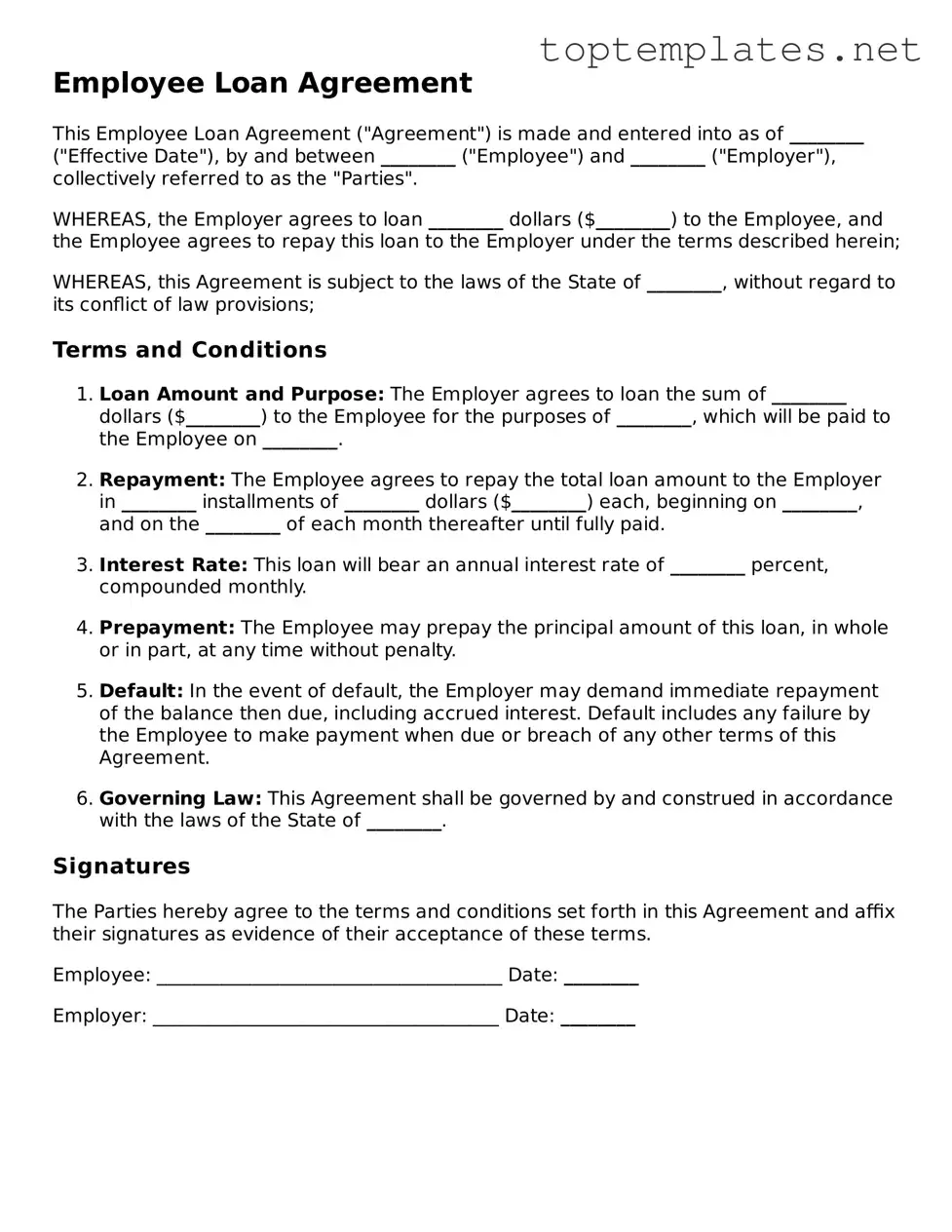What is an Employee Loan Agreement?
An Employee Loan Agreement is a formal document that outlines the terms and conditions under which an employer lends money to an employee. This agreement covers the loan amount, repayment schedule, interest rate (if applicable), and consequences of non-repayment. It serves to protect both parties' interests and ensures clarity regarding the loan.
Why is it important to have a written Employee Loan Agreement?
Having a written agreement is crucial as it formally records the loan's terms, preventing misunderstandings between the employee and employer. It ensures both parties have a clear understanding of their obligations. Additionally, in case of a dispute, a written agreement provides a solid reference point that can help in resolving issues amicably or in legal proceedings.
What details should be included in an Employee Loan Agreement?
An effective Employee Loan Agreement should include the full names and contact information of both the employer and the employee, the loan amount, the purpose of the loan, repayment schedule, interest rate if any, consequences of late payments or non-repayment, and any collateral involved. It should also be signed and dated by both parties to signify their agreement to the terms.
Are interest rates required in Employee Loan Agreements?
Interest rates are not mandatory in Employee Loan Agreements. Whether to charge interest is at the discretion of the employer. However, if an interest rate is applied, it should be reasonable and clearly stated in the agreement to avoid any potential legal issues related to usury laws.
How can one enforce an Employee Loan Agreement?
If an employee fails to repay the loan as agreed, the employer has the right to take legal action based on the terms outlined in the Employee Loan Agreement. Before proceeding to legal action, it's often advisable to attempt resolving the situation through direct communication. If that fails, small claims court or civil court are potential avenues for enforcing the agreement, depending on the loan amount.
Can an Employee Loan Agreement be modified?
Yes, an Employee Loan Agreement can be modified, but any modifications must be agreed upon by both the employer and the employee. It is important to document these changes formally through a written amendment to the original agreement and to have both parties sign it to avoid future disputes.
What happens if an employee leaves the company with an outstanding loan?
If an employee leaves the company before repaying the loan in full, the repayment terms outlined in the Employee Loan Agreement still apply. The agreement may specify procedures for such situations, including immediate repayment or continued repayment as per the original schedule. Employers may also have the legal right to deduct the remaining loan amount from the employee's final paycheck, subject to state laws.
